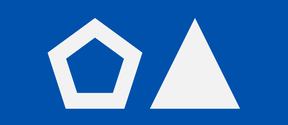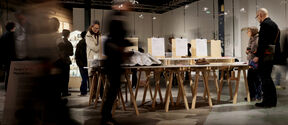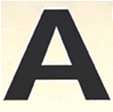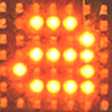How do you know where a drone is flying without a GPS signal?

When Jouko Kinnari started his doctoral dissertation while on Saab's payroll in January 2019, the concrete research question was not yet clear. After some discussions and preliminary research, the localisation of unmanned flights was selected as the topic. The information generated in the study has a more general application in robotics, where localisation is important. An example of a robot is an automatic vehicle that drives between buildings without a driver.
Combining a map and a camera image is something new
GPS receivers are familiar to everyone. Satellites in space send radio signals to your mobile phone, and the map application on the phone shows you where you are. The objective of Kinnari's work is to build a similar functionality, but without a satellite positioning system.
"In crisis situations, satellite positioning systems can be disrupted, or they are not available, in which case location must be determined in some other way.”
Kinnari says that there has been a lot of research on the topic of positioning. A drone has sensors that provide information about its movements. In addition to a camera, a drone has a compass, as well as acceleration, pressure and angular velocity sensors.
"What is new in my research is combining map data and data transmitted by a drone in a way that works well in variable conditions. I am trying to link the drone’s camera image to a map image. This gives me an estimate of where the drone is flying.“
Doctoral work brings innovation to the company
Jouko Kinnari worked on product development in industry for ten years before his current work. He joined Saab because he was interested in how research could be a way of generating innovation. Doctoral research can bring the company completely new innovations.
The research group also benefits from having a member of the team who has worked in product development.
"It can be very valuable to bring experience of the field into the research group.”
According to Kinnari, Saab has a good understanding of the uncertainties involved in conducting research. In his opinion, focussed research is one of the instruments a company can use to bring innovations to its product offering. At the same time, the technical competence of the company’s staff increases.
"Investing in research involves risk; it is not possible to predict very accurately what the results will be and when. On the other hand, risk can also be positive. Through research the company's expertise can be riding the front of a wave of key technology right at its birth. When this happens, the company gains significant competitive advantages.“
Kinnari believes that there is one clear difference between the worlds of product development and research. In research it is not enough to solve a problem well; the researcher must also know how their work relates to existing research. In product development the solution produced just has to be good enough.
Thorough investigation
In his doctoral research, Jouko Kinnari has enjoyed the opportunity to explore a subject thoroughly and develop his own competence. His doctoral studies have shown him how the world has progressed rapidly in certain areas in just ten years.
"We now have much more opportunity in areas such as machine learning than before.”
Read more news
New recommendation: doctoral students’ plans (DPSP) to be discussed twice a year
Doctoral students and supervising professors are encouraged to use the My Dialogue schedule to discuss the Doctoral personal study plan (DPSP).
Remember to pay attention to the terms of use of electronic resources
A wide range of electronic resources has been acquired for the use of Aalto University students and researchers. However, it is good to remember that all use of the materials acquired by the Aalto University Learning Centre is subject to the terms of use.
Aalto University's marine technology ranked 27th globally
Seven fields of Aalto University ranked among the top one hundred in the prestigious Shanghai Ranking Global Ranking of Academic Subjects






